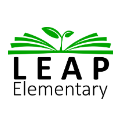
(View Complete Item Description)
Maple Grove Charter School, Athens School District, is a Grades K-5 elementary school located the heart of the rural Town of Hamburg. The school takes its name from the school forest on its site. Built in 1904, the school has annual tradition of tapping the maple trees. What started as a first grade classroom project has expanded as students from each grade level identify, tap, and collect sap from two trees. Unit plans have been created for each grade level to address agriculture, science, literacy, social studies, math, and environmental literacy standards. While the sap collecing routines remain relevatively constant each year, the learning opportunties have been differentiated by grade level so that students are always learning new content and skills.In the following unit plan discussion readers will learn about the schoolwide project from the perspective of teachers in Grades 1 and 5.Students in Grade 1 learn about maple tree identification and the traditional and modern tools and technologies employed in sap collection and syrup production. Their fifth grade counterparts continue to grow in their understanding of the tapping, collection, and production processes, and take on the role of entrepreneurs as they develop their brand and market the finished pure maple syrup.
Material Type:
Unit of Study
Authors:
Sandy Benton,
Treva Etten,
Emily Szutkowski


